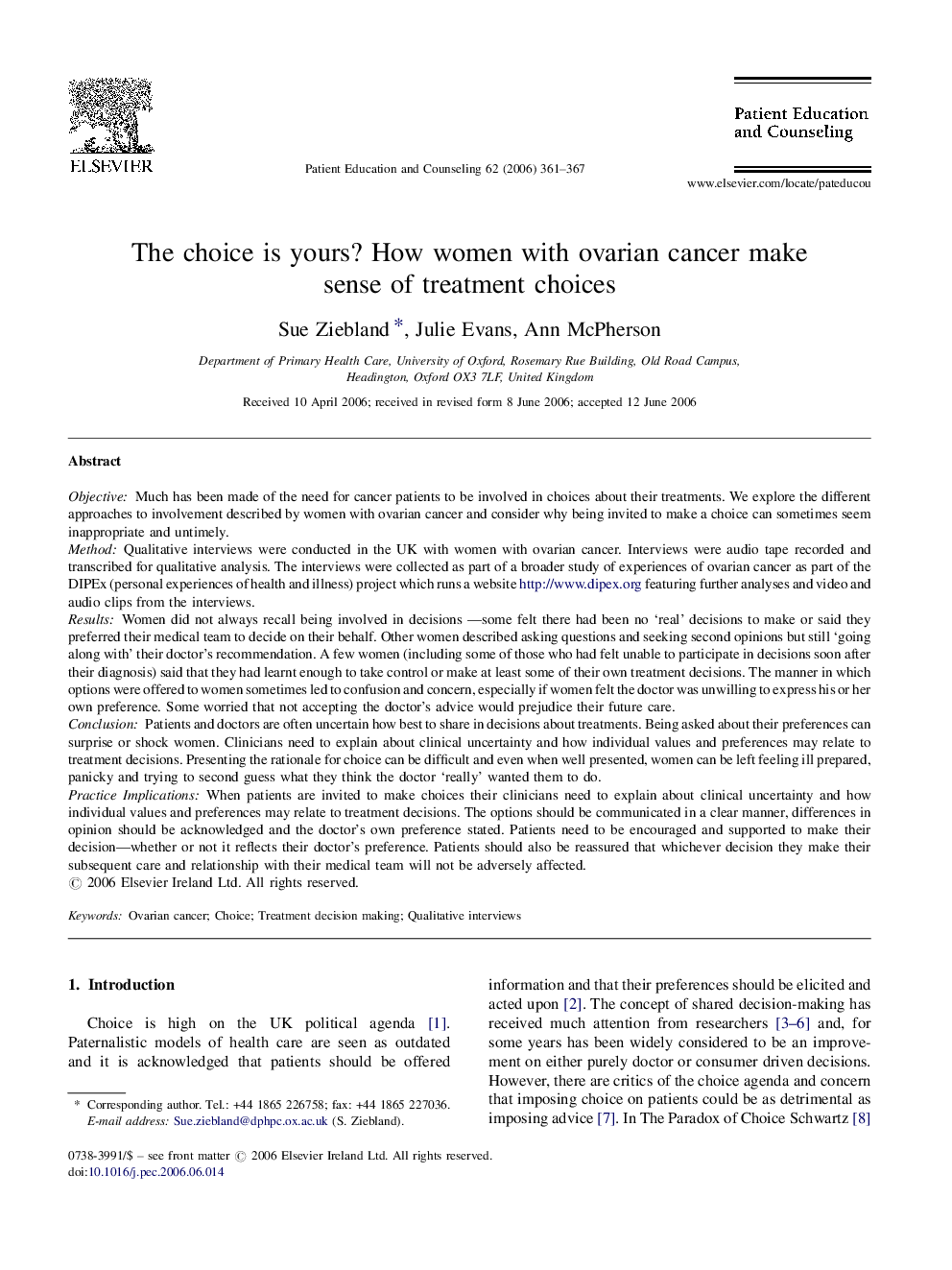| Article ID | Journal | Published Year | Pages | File Type |
|---|---|---|---|---|
| 3815379 | Patient Education and Counseling | 2006 | 7 Pages |
ObjectiveMuch has been made of the need for cancer patients to be involved in choices about their treatments. We explore the different approaches to involvement described by women with ovarian cancer and consider why being invited to make a choice can sometimes seem inappropriate and untimely.MethodQualitative interviews were conducted in the UK with women with ovarian cancer. Interviews were audio tape recorded and transcribed for qualitative analysis. The interviews were collected as part of a broader study of experiences of ovarian cancer as part of the DIPEx (personal experiences of health and illness) project which runs a website http://www.dipex.org featuring further analyses and video and audio clips from the interviews.ResultsWomen did not always recall being involved in decisions —some felt there had been no ‘real’ decisions to make or said they preferred their medical team to decide on their behalf. Other women described asking questions and seeking second opinions but still ‘going along with’ their doctor's recommendation. A few women (including some of those who had felt unable to participate in decisions soon after their diagnosis) said that they had learnt enough to take control or make at least some of their own treatment decisions. The manner in which options were offered to women sometimes led to confusion and concern, especially if women felt the doctor was unwilling to express his or her own preference. Some worried that not accepting the doctor's advice would prejudice their future care.ConclusionPatients and doctors are often uncertain how best to share in decisions about treatments. Being asked about their preferences can surprise or shock women. Clinicians need to explain about clinical uncertainty and how individual values and preferences may relate to treatment decisions. Presenting the rationale for choice can be difficult and even when well presented, women can be left feeling ill prepared, panicky and trying to second guess what they think the doctor ‘really’ wanted them to do.Practice ImplicationsWhen patients are invited to make choices their clinicians need to explain about clinical uncertainty and how individual values and preferences may relate to treatment decisions. The options should be communicated in a clear manner, differences in opinion should be acknowledged and the doctor's own preference stated. Patients need to be encouraged and supported to make their decision—whether or not it reflects their doctor's preference. Patients should also be reassured that whichever decision they make their subsequent care and relationship with their medical team will not be adversely affected.
